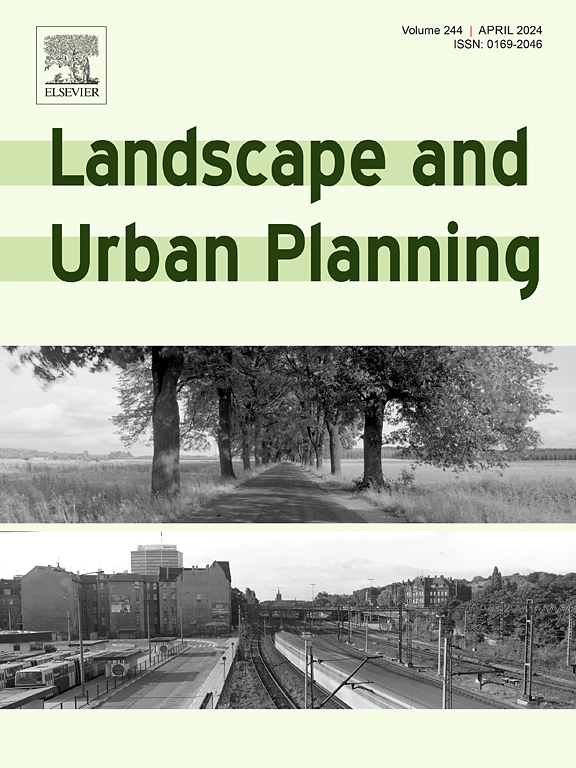What doesn’t kill you makes you stronger: Using plant traits to inform species selection for naturalistic plantings in hotter and drier climates
IF 7.9
1区 环境科学与生态学
Q1 ECOLOGY
引用次数: 0
Abstract
Urban plantings can improve the liveability of cities, but wide-scale implementation can be deterred by maintenance costs. Naturalistic plantings are low-maintenance and are being used to provide multiple ecosystem services and amenity in cities worldwide. In hotter and drier climates, naturalistic plantings could take inspiration from natural shrubland communities to tolerate summer droughts and remain low maintenance. The Woody Meadow Project proposes using diverse plantings of small trees and shrubs maintained by coppicing (hard pruning every 2 years) to create dense canopies to suppress weeds and promote flowering. Therefore, Woody Meadow species should resprout vigorously after coppicing, but coppicing response remains poorly understood. Leveraging on research into resprouting after natural disturbances such as fire, we investigated whether plant traits, starch reserves, and habitat water availability influence resprouting success and vigour after coppicing. We evaluated 77 Australian woody species in a common garden experiment and related coppicing response to pre-coppiced traits and storage reserves and their habitat water availability based on species occurrences (Atlas of Living Australia) and their climates (WorldClim). Most (88 %) species resprouted after coppicing, suggesting that most Australian woody species are suitable for Woody Meadows. However, we could not predict resprouting success after coppicing with pre-coppiced traits and habitat water availability. Nonetheless, greater species diversity could minimise impacts of poorer resprouters on planting success. Greater resprouting vigour was observed for species with greater pre-coppiced basal area, height, total biomass, and starch pool (i.e., greater pre-coppiced plant size), indicating that larger-sized plant species will maintain weed suppression and visual appeal in Woody Meadows after coppicing.

不会杀死你的东西会让你更强大:在炎热和干燥的气候下,利用植物的特性来选择自然种植的物种
城市种植可以改善城市的宜居性,但大规模实施可能会受到维护成本的阻碍。自然植物的维护成本低,在世界各地的城市中被用来提供多种生态系统服务和舒适设施。在炎热干燥的气候中,自然主义的种植可以从天然灌木群落中获得灵感,以忍受夏季干旱,并保持低维护。木本草甸项目建议通过修剪(每两年硬修剪一次)来种植各种小树和灌木,以形成茂密的树冠,以抑制杂草并促进开花。因此,木本草甸植物在刈刈后应该会有旺盛的生长,但对刈刈的响应尚不清楚。利用对自然干扰(如火灾)后再生的研究,我们研究了植物性状、淀粉储量和生境水分有效性是否影响再生成功和活力。基于物种发生(Atlas of Living Australia)和气候(WorldClim),我们对77种澳大利亚木本植物进行了普通园林试验,并分析了相关的copcoping对预copcoping性状、储存储量和栖息地水分有效性的响应。大多数(88%)树种在攀缘后重新生根,表明大多数澳大利亚木本树种适合于伍迪草地。然而,我们不能预测预适应性状和生境水分有效性后的再生成功。尽管如此,更大的物种多样性可以最大限度地减少较差的孢子对种植成功的影响。预覆盖后的底面面积、高度、总生物量和淀粉库(即预覆盖后的植株大小)较大的植物再生活力更强,这表明在预覆盖后,较大的植物物种将保持对伍迪草甸杂草的抑制和视觉吸引力。
本文章由计算机程序翻译,如有差异,请以英文原文为准。
求助全文
约1分钟内获得全文
求助全文
来源期刊

Landscape and Urban Planning
环境科学-生态学
CiteScore
15.20
自引率
6.60%
发文量
232
审稿时长
6 months
期刊介绍:
Landscape and Urban Planning is an international journal that aims to enhance our understanding of landscapes and promote sustainable solutions for landscape change. The journal focuses on landscapes as complex social-ecological systems that encompass various spatial and temporal dimensions. These landscapes possess aesthetic, natural, and cultural qualities that are valued by individuals in different ways, leading to actions that alter the landscape. With increasing urbanization and the need for ecological and cultural sensitivity at various scales, a multidisciplinary approach is necessary to comprehend and align social and ecological values for landscape sustainability. The journal believes that combining landscape science with planning and design can yield positive outcomes for both people and nature.
 求助内容:
求助内容: 应助结果提醒方式:
应助结果提醒方式:


